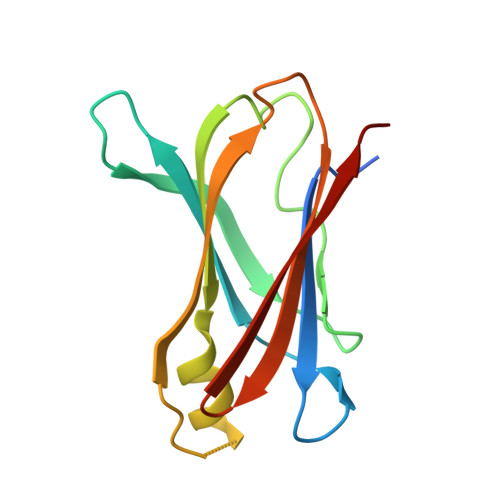X-ray crystallographic studies of two transthyretin variants: further insights into amyloidogenesis.
Neto-Silva, R.M., Macedo-Ribeiro, S., Pereira, P.J., Coll, M., Saraiva, M.J., Damas, A.M.(2005) Acta Crystallogr D Biol Crystallogr 61: 333-339
- PubMed: 15735344
- DOI: https://doi.org/10.1107/S0907444904034316
- Primary Citation of Related Structures:
1X7S, 1X7T - PubMed Abstract:
Transthyretin (TTR) is a homotetrameric plasma protein that, as a result of a set of not yet fully characterized conformational changes, forms fibrillar aggregates that are the major protein component of amyloid deposits. More than 80 mutations associated with TTR amyloid deposition have been described in the literature. X-ray crystallography was used to elucidate the three-dimensional structure of two important TTR variants: TTR Y78F, an amyloidogenic protein, and TTR R104H, which is associated with a protective effect over the amyloidogenic V30M mutation. The structures of those two TTR variants have been determined in space group P2(1)2(1)2 to 1.55 and 1.60 angstroms resolution, respectively, using molecular-replacement techniques. Detailed analysis of the protein model for TTR Y78F indicates a destabilization of the contacts between the alpha-helix and AB loop and the body of the molecule, intimately related to the amyloidogenic nature; contrastingly, in the TTR R104H variant new contacts involving the N-terminal region and His104 are clearly antagonists of amyloid formation.
- Molecular Structure Group, Institute for Molecular and Cell Biology, Rua do Campo Alegre No. 823, 4150 Porto, Portugal.
Organizational Affiliation:
















